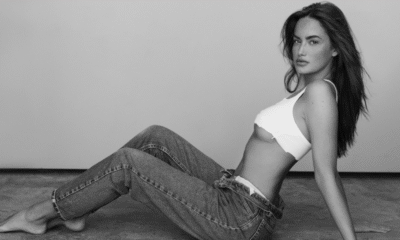Art & Paintings
Wes Anderson’s The Phoenician Scheme Features Real Masterpieces Worth Millions
In The Phoenician Scheme, Wes Anderson’s latest visually rich caper, the most expensive stars don’t speak a word—they hang silently on the walls. For the first time in his filmmaking career, Anderson eschewed reproductions in favor of actual paintings by Pierre-Auguste Renoir, René Magritte, and other legendary artists, transforming his fictional world into a real-life museum.
The film follows Zsa-zsa Korda (played by Benicio Del Toro), a domineering art-collecting businessman whose curated surroundings reflect his obsession with possession and prestige. Rather than fake the opulence, Wes Anderson wanted the artwork to be authentic. “Because it’s sort of art and commerce mixed together this time, we should try to have the real thing,” the director explained.
Among the showstoppers is Renoir’s Enfant Assis en Robe Bleue, which once belonged to Greta Garbo, now hanging above the bed of Mia Threapleton’s character Liesl. Nearby, Magritte’s enigmatic The Equator sits behind a group of scheming elites in a scene filmed at Studio Babelsberg in Potsdam, Germany. A striking Juriaen Jacobsz painting of dogs fighting over meat—on loan from the Hamburger Kunsthalle—anchors a period room and underscores the film’s themes of greed and conflict.

Wes Anderson’s world of art in The Phoenician Scheme
The High-Stakes Art of Filming with Real Art
Securing these works was no easy feat. Wes Anderson enlisted curator Jasper Sharp, who had previously worked with the director on a museum exhibition in Vienna, to lead the delicate negotiations with collectors and museums. Many laughed at the proposal. “Some of the responses were howls of laughter, followed by hangups,” Jasper Sharp recalled.
But with careful planning, Sharp made the impossible happen. To ensure safety, the production employed museum-level protocols: conservators, registrars, climate control measures, and round-the-clock security. “We treated them as if we were borrowing them for a major museum show,” said Sharp.
Some pieces were only on set for a day, like the Magritte. Others, such as the Kunsthalle’s old masters, remained for weeks. Production designer Adam Stockhausen and set decorator Anna Pinnock used mock-ups to test placements before the real art was swapped in, limiting the time the valuable works were exposed to studio conditions.
View this post on Instagram
Why It Matters for Anderson—and for Cinema
The impact of using genuine artwork was palpable. “It changed the energy and the atmosphere on set,” Jasper Sharp said. Even Benicio Del Toro confessed the Renoir made the cast “nervous, in a good way.” That reverence shows on screen, enhancing the film’s meditation on ownership, beauty, and power.
With The Phoenician Scheme, Wes Anderson may have launched a new cinematic trend: treating fine art as not just set dressing, but essential characters. As Sharp put it, “It’s really hard once you’ve done this for the first time to put it back in the bottle.”








































